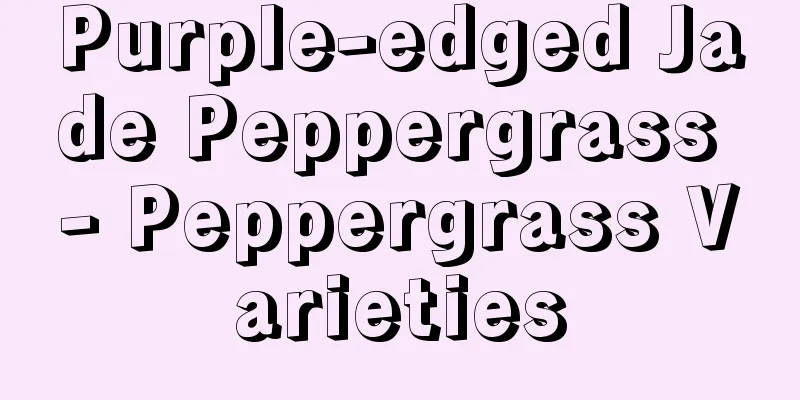Purple-edged Jade Peppergrass - Peppergrass Varieties

Watermelon PeppercornAlso known as watermelon rind, it is native to Brazil. The leaves emerge from the roots and the plant height is about 20 to 30 cm. The leaves grow from close to the substrate and are obovate. The leaves are thick and shiny, semi-leathery to the touch, green on the upper side and red on the underside. There are silvery-white stripes on the green leaves, which look like watermelon rind. Therefore, it is called watermelon rind peperomia. PeperomiaAlso known as four-angled pepper grass. It grows in small clusters, with wrinkled heart-shaped leaves. The back of the leaves is gray-green, and the surface of the leaves is dark brown-green. If you look closely, you will find that its leaves have a velvety luster. When flowering, it is a spadix. The flower stem is very short, with the plant height being only 20 cm. Peperomia variegataAlso known as variegated bean green and milky peperomia, it is native to Brazil. It is a creeping herb with tea-brown, fleshy stems. The leaves are broadly ovate, green with yellow spots. Peperomia lyreleafNative to West India. Upright plant type, 20 to 30 cm tall. Growing slowly. The leaves are obovate, thick, fleshy and stiff, with entire or irregularly lobed edges. The leaves are dark green and shiny, with red edges. Peperomia rotundifoliaNative to Venezuela. Erect plant, about 30 cm tall. Simple leaves are alternate, elliptical or obovate. The leaf tip is blunt and rounded, the leaf base gradually becomes narrower and finally becomes wedge-shaped. The leaves are thick, stiff, smooth and shiny. The stems and petioles are fleshy and thick. The petiole is short and rooting is easy. The internodes are short and rooting is very easy to take place at the internodes. Golden Pepper GrassSimilar to round-leaved peperomia, only the leaf color is different. The leaves are dark green, but with irregular light green to creamy yellow patches of varying sizes; or dark green patches or spots are scattered on the predominantly yellow-green leaves. |
<<: Cultivation methods and precautions of purple-edged jade peperomia
>>: What are the varieties of Margaret flowers?
Recommend
10 beautiful chrysanthemums, a hot item during National Day, so shocking!
1. Purple Phoenix Peony 2. Panlong Magnolia 3. Ga...
Key points for pear tree management in December
In December, the pear trees enter a period of lea...
What to do if the African violet leaves rot
1. Pay attention to ventilation and lighting Afri...
What fertilizer is best for osmanthus trees? Which fertilizer makes them grow fastest?
When fertilizing potted osmanthus, it is best not...
How to grow purple bamboo
1. Breeding environment 1. Soil: When planting, u...
What is the best month to plant lentils?
When to plant lentils Green beans are generally p...
How to prune potted osmanthus (illustration of pruning techniques)
1. Pruning during the seedling stage For potted o...
Garlic likes shade or sunlight, is it a sun-loving plant?
Does garlic prefer shade or sun? Garlic is a sun-...
Can loquat trees be planted outside your home?
Can loquat trees be planted at the doorstep? Loqu...
What are the consequences of overwatering the peace lily and how to deal with it?
1. What are the consequences? If you give your pe...
Follow the camera to play with succulents and see what expensive goods look like!
raindrop Family: Echeveria of the Crassulaceae fa...
Pests and diseases of heather and their control
Diseases and their control of Photinia Heather ha...
The secret to keeping succulents alive
Succulent plants are very beautiful and popular. ...
What fertilizer is best for Koelreuteria paniculata
Fertilization time of Koelreuteria paniculata 1. ...
How to prune a money tree
Things to note before pruning money tree Everyone...









